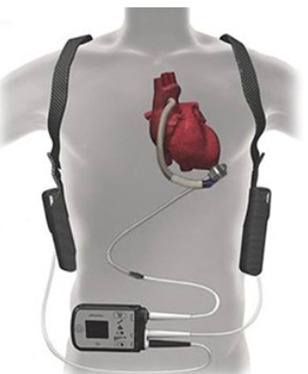LVAD
Left Ventricular Assist Device
If you have advanced heart failure, you may need a left ventricular assist device (LVAD). An LVAD is surgically implanted in the heart and takes over the work of the left ventricle, one of the heart’s two lower chambers.
An LVAD helps the heart pump oxygenated blood to the body when the heart isn’t healthy enough to do so. This can lessen the heart’s workload, reduce symptoms and keep a person alive longer.
Also called a mechanical circulatory support device, an LVAD can be used in several ways, including:
- A bridge to recovery. The LVAD is placed temporarily until the heart can pump effectively on its own.
- A bridge to transplant. The LVAD keeps the heart pumping until a donor heart organ is available.
- Destination therapy. The LVAD is used as a permanent implant to lessen symptoms for people who can’t have other treatments, such as transplantation.
How does an LVAD work?
An LVAD is a battery-operated pump implanted inside the heart’s left ventricle or attached to it.
A tube runs from the LVAD pump to the outside of the body and connects to the LVAD’s control system and battery, worn on a strap or belt.
Inside the body, the pump pulls blood from the left ventricle, then pushes the blood into the aorta (the large blood vessel exiting the left ventricle). From there, the blood can reach the rest of the body.
